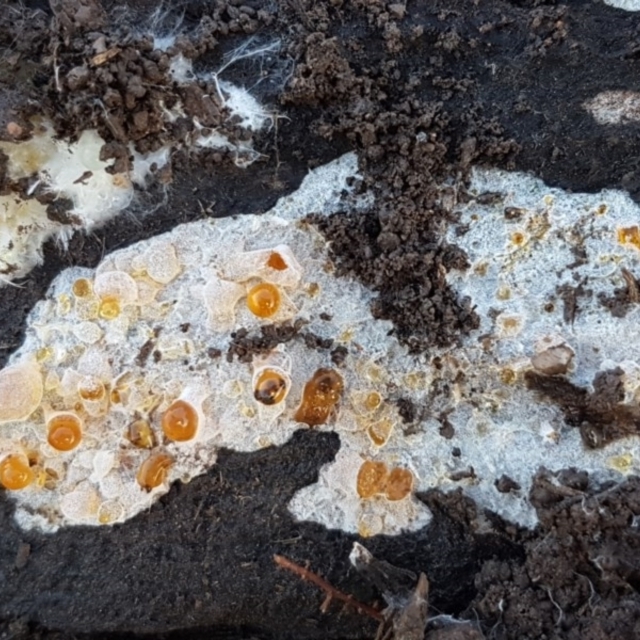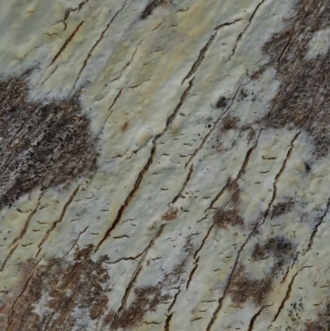Corticioid fungi
The fruitbody of a corticioid fungus is essentially two-dimensional. There are many genera of corticioid fungi and fruitbody texture ranges from very flimsy and almost like a flattened cobweb to a leathery sheet that may be 2 or 3 millimetres thick. Mostly the fruitbodies are found on the underside of dead wood that is lying on the ground, but some typically grow on the underside of the fine twig litter found on the forest floor and a few occur on the bark of live plants. Occasionally you find corticioid fruitbodies on vertical soil banks or on the underside of a soil ledge. For effective spore release the fruitbodies need to be facing downward or be on a vertical surface.
Though essentially two-dimensional and therefore resembling a sheet or layer of paint on the woody substrate, the surface need not be smooth (though that is the case in many species). It may be wrinkled (sometimes very intricately), warted, granularly coated or with spiny or tooth-like outgrowths (which may be sparse or dense). They occur in in many colours (with white and shades of brown commonest).
Some genera (or even species) can be identified with the naked eye but usually identification even to genus requires a look under the microscope.
Look-alikes
Some of the flimsier fruitbodies may resemble invertebrate webbing or a fungal mycelium. Since the fruitbodies are two-dimensional some of the more robust and paint-like fruitbodies may be mistaken for crustose lichens (or vice versa).
Corticioid fungi is listed in the following regions:
Species information
- Corticioid fungi Scientific name
- Common name
- Not Sensitive
- Local native
- Non-Invasive
- Up to 963.4m Recorded at altitude
- Machine learning
Follow Corticioid fungi
Receive alerts of new sightings
SubscribeLocation information
-
Maps
ANBG ANBG South Annex Aranda Bushland Black Mountain Gungaderra Grasslands Kowen Escarpment Molonglo River Reserve Mongarlowe River Mount Painter Mundoonen Nature Reserve Namadgi National Park QPRC LGA Sherwood Forest Tidbinbilla Nature Reserve Umbagong District Park Wanna Wanna Nature Reserve -
Survey points
Point 5140 Point 5215 -
Places
Acton, ACT Bruce, ACT Carwoola, NSW Cook, ACT Coree, ACT Crace, ACT Holt, ACT Kaleen, ACT Kowen, ACT Lade Vale, NSW Latham, ACT Molonglo Valley, ACT Mongarlowe, NSW Murrumbateman, NSW Paddys River, ACT Tennent, ACT



















































